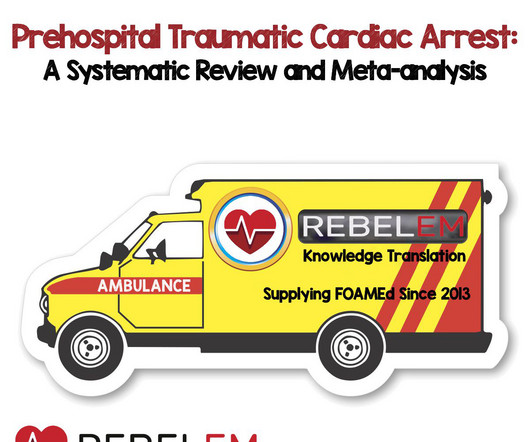SGEM #417: Everybody’s Changing…the Reference Ranges for Pediatric Vital Signs
The Skeptics' Guide to EM
OCTOBER 14, 2023
Reference: Brennan L et al. Reference: Brennan L et al. Background: We have looked at pediatric vital signs on the SGEM back in 2014 with PedEM superhero Dr. Anthony Crocco ( SGEM#98 ). That episode reviewed the 2011 Fleming et al systematic review for the normal ranges of HR and RR in children from birth to 18 years of age.












Let's personalize your content